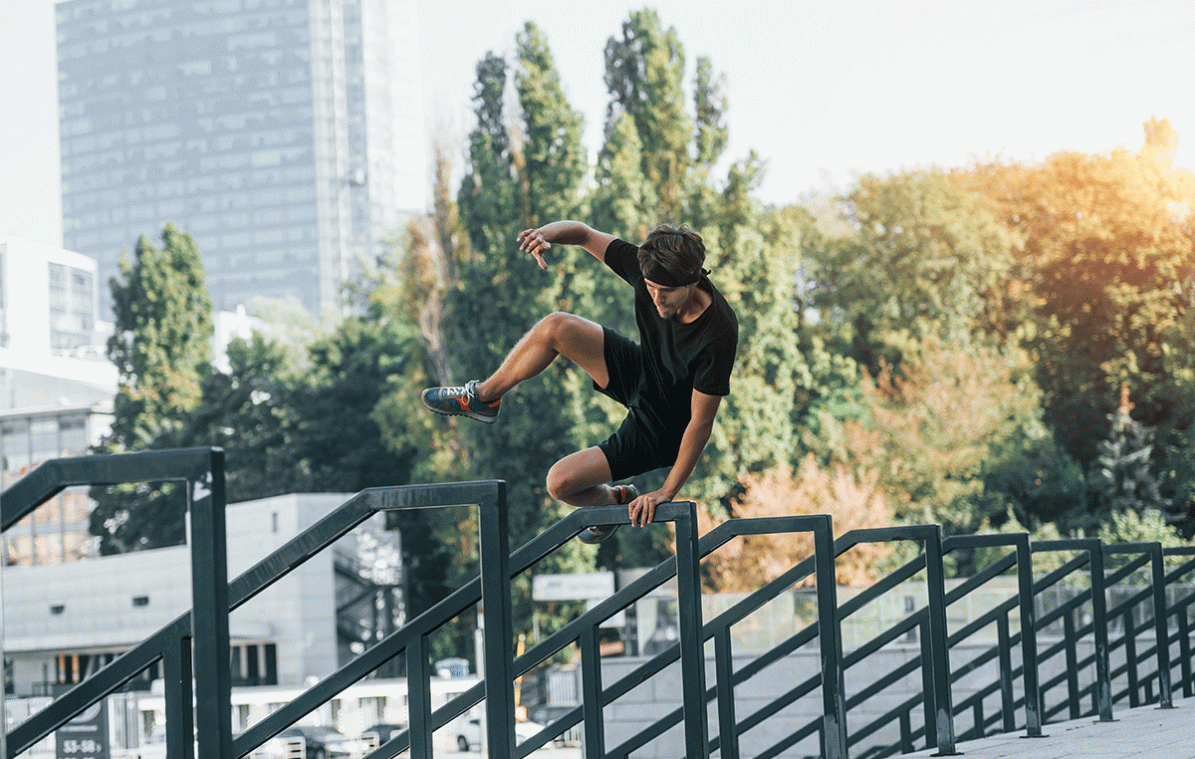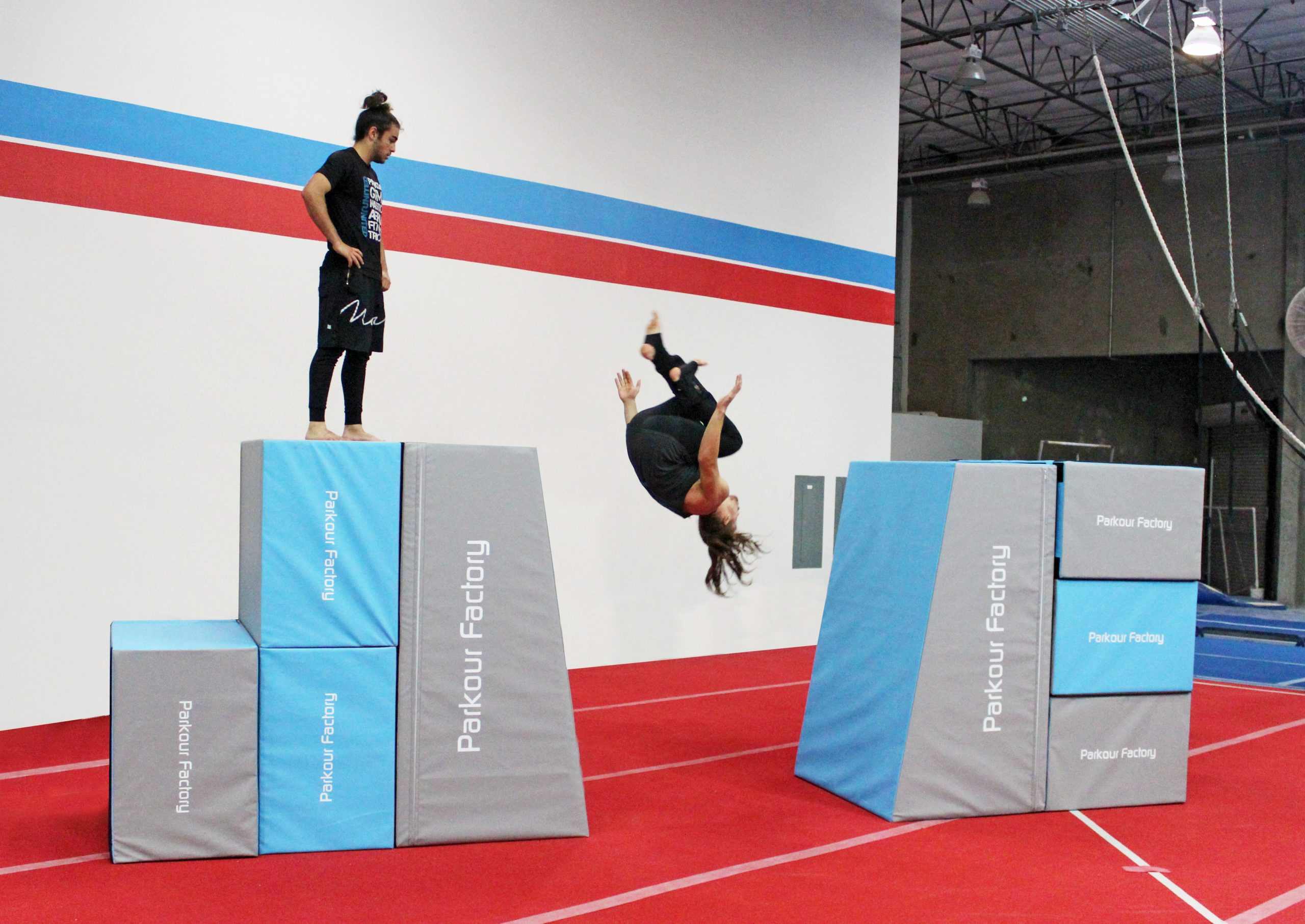In a world where urban landscapes dominate our surroundings, a unique and exhilarating discipline has emerged—parkour. More than just a physical activity, parkour is an art form that transcends the boundaries of traditional sports and exercise. It's a philosophy that celebrates movement, adaptability, and the inherent freedom of the human body.
What is Parkour? a Look at the Basics
The Origins of Parkour: How It All Began
Parkour traces its origins to the late 1980s in France, where David Belle and his friends, a group known as the "Yamakasi," developed it as a unique way to move through their urban environment. They weren't just trying to get from point A to point B— they aimed to do it with a combination of gracefulness and efficiency. What began as a local passion quickly captured global attention, inspiring people everywhere to see their cities in a new way. Over the years parkour's roots have managed to spread across continents. connecting enthusiasts who appreciate the blend of athletic skill and creativity that the practice offers.
The Philosophy Behind Parkour
At its core, parkour isn’t about flashy stunts or extreme moves—it’s about finding creative ways to overcome obstacles. The philosophy is to navigate your environment by moving efficiently, using walls, railings, and any structure in your surroundings as part of your journey. Parkour practitioners, known as traceurs, focus on developing skills like balance, strength, and flexibility. The mindset is just as important as the physical skills; parkour encourages self-improvement, adaptability, and resilience. These principles go beyond the sport, encouraging practitioners to bring the same problem-solving and courage into their daily lives.
Parkour as a Form of Self-Expression
Benefits of Practicing Parkour
The Physical Benefits of Parkour
Parkour is an intense full-body workout that builds strength, flexibility, and coordination. Each session engages your core, legs, arms, and just about every muscle group as you practice moves like running, jumping, climbing, swinging, and vaulting. Over time, you’ll develop lean muscle, boost your cardiovascular fitness, and build a rock-solid core. What’s great about parkour is its adaptability to different fitness levels. Beginners can start small with precision jumps and basic rolls, while more advanced traceurs can push the limits with complex sequences and higher jumps. The sport meets you where you are and grows with you as you get stronger and more confident.
Building Mental Discipline and Focus
Parkour isn’t just about physical strength; it requires serious mental focus and quick decision-making. To practice parkour, you need to constantly assess your surroundings, analyze obstacles, and make split-second decisions. This mental training teaches you to stay calm and sharp, even when faced with unexpected challenges. The skills you develop in parkour—like assessing risks and plotting the most efficient path—often spill over into daily life. With practice, you’ll find yourself approaching obstacles with a new mindset, ready to think on your feet and overcome challenges, both on and off the course.
An Empowering Way to Face Your Fears
One of the greatest benefits of parkour is how it helps you conquer fears and build resilience. Whether it’s the fear of heights, a big jump, or the uncertainty of tackling a new obstacle, parkour encourages you to face your limits and push through them. Every time you complete a challenging move, you gain confidence in yourself and what you can accomplish. This growing sense of self-assurance not only helps you progress in parkour but also empowers you to tackle other challenges in life with courage and determination.
Essential Skills for Parkour Beginners
Mastering the Basics: Rolls and Landings
Every parkour journey starts with mastering the fundamentals, especially rolls and safe landings. Rolls are essential for absorbing impact after jumps, helping you land smoothly and preventing injuries to your joints. Learning how to roll properly not only makes you more efficient but also builds your confidence to try more advanced moves. A solid roll is your best friend in parkour, allowing you to push limits while staying safe. Landings, too, are crucial—practicing soft, controlled landings keeps you light on your feet and reduces strain on your body over time.
Building Strength and Agility Through Precision Jumps
Precision jumps are one of the core skills in parkour, teaching you to jump accurately from one spot to another. This skill is all about control, focus, and balance—qualities that make parkour both challenging and rewarding. When you’re first starting, practice jumping to marked spots or low objects to hone your accuracy and build leg strength. Precision jumps help you get comfortable with distance and timing, setting a strong foundation as you progress to bigger jumps and more complex moves.
Developing Balance and Coordination
Balance is key in parkour, helping you stay steady as you tackle narrow or uneven surfaces. Many beginners start by practicing balance walks along low ledges, beams, or curbs, improving coordination and confidence along the way. As you work on balance, you’ll also be training your mind to stay focused, a skill that comes in handy when moving from one obstacle to another. Developing strong balance and coordination will make each new challenge feel more manageable, and it’s one of the skills that grows naturally with practice.
The Parkour Community: Creativity, Connection, and Collaboration
Finding Inspiration and Support Within the Community
Parkour is more than just a solo sport; it’s a community that thrives on collaboration and support. Many practitioners train together, learning from each other’s techniques, sharing tips, and encouraging one another to push boundaries. The parkour community is filled with camaraderie, with beginners and seasoned traceurs often practicing side by side. Whether it’s a local meetup or a large workshop, training with others brings motivation and makes each session more rewarding. Having people who understand the thrill of parkour makes it easier to improve, try new moves, and stay inspired.
Connecting Globally Through Social Media and Events
The parkour community goes far beyond local groups; it’s truly global. Social media has brought practitioners together, allowing them to share their progress, showcase creative moves, and celebrate each other’s achievements. Platforms like Instagram, YouTube, and TikTok are packed with parkour videos that showcase new ideas and spark inspiration. Large events and international workshops are also common, giving traceurs a chance to meet in person, exchange techniques, and experience new parkour environments. This worldwide network of enthusiasts creates a supportive, vibrant culture that encourages everyone to push their limits.
Embracing Creativity: Turning the Urban Landscape into a Playground
In parkour, creativity is at the heart of every movement. Just as an artist sees a canvas, traceurs see their surroundings as a playground for self-expression. There are no set patterns in parkour; practitioners are free to invent moves, adapt to their surroundings, and experiment with endless variations. Each urban landscape offers unique obstacles, from walls and rails to benches and staircases, allowing traceurs to interact with the world in imaginative ways. This freedom to explore and create is what makes parkour so exciting, giving everyone a chance to make each move their own.
Finding Great Spots and Local Communities to Practice
If you’re looking to get into parkour, connecting with local groups or finding popular practice spots can make a huge difference. Community centers, parks, and university campuses often host informal meetups where beginners and pros come together. There are many indoor complexes that are dedicated to parkour, offering courses and challenging obstacles designed for practice—all in a safe, controlled environment. Apps like “MapMyRun” and local Facebook groups can help you locate safe, popular parkour spots near you. Practicing in familiar areas with other people not only makes it more enjoyable but also helps you improve by learning from others and tackling new obstacles together.
Staying Safe: Tips for Parkour Practice
Start Small and Know Your Limits
In parkour, safety is about knowing your limits and building skills gradually. Start with small jumps, low obstacles, and basic moves before pushing yourself toward bigger challenges. Parkour is all about progression, so don’t feel pressured to jump into advanced techniques right away. Focusing on the basics first gives you a solid foundation, and as you improve, you’ll have the confidence and control needed to tackle more difficult moves safely.
Use Proper Gear and Choose Safe Environments
While parkour doesn’t require a lot of gear, having the right shoes with good grip can make a big difference. Grippy shoes help you keep your footing on various surfaces, preventing slips and falls. It’s also important to practice in safe environments, like open spaces with soft ground or gyms designed for parkour. Starting out in a safe setting lets you focus on learning without unnecessary risks, building confidence as you work toward bigger obstacles and more challenging spots.
Practice with Others for Support and Tips
Practicing parkour with others, especially those with more experience, is a great way to stay safe and learn faster. More experienced traceurs can offer advice on form, tips for tackling certain obstacles, and safety pointers to keep you injury-free. Having a supportive group also makes practice more fun, keeping you motivated to improve. Plus, you’ll be part of a community that understands the thrill of each new skill and challenge, making your parkour journey even more rewarding.






